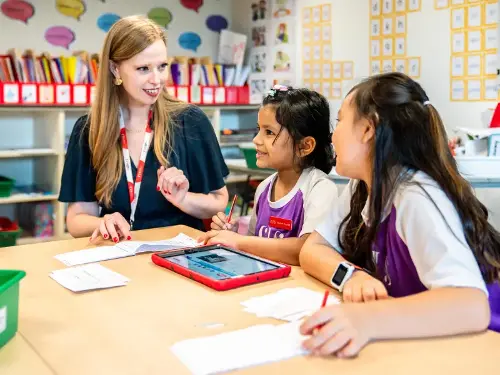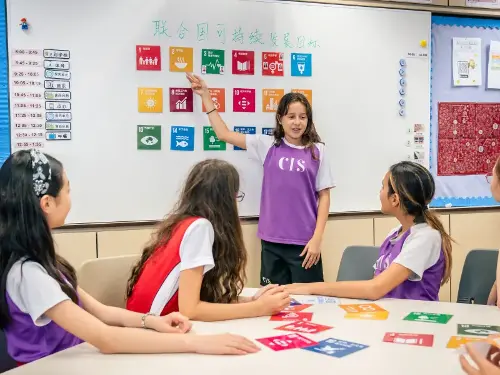Canadian International School students gain life skills and language skills from its bilingual programme.
It’s been 10 years since Canadian International School (CIS) introduced its Chinese-English Bilingual Programme. Here, the school shares some of the life skills that students gain from it, in addition to learning second language skills.
Building strong bilingual second language skills
Did you know that CIS was one of the first schools in Singapore to offer a Chinese-English Bilingual programme?
Among its key components are:
- Dedicated bilingual principals
- Two native-speaking teachers for each class
- Equal exposure to two languages
- A programme fully aligned to the IB PYP
- No repetition of content in the two languages
- A secondary pathway that offers bilingual classes in maths, humanities and theory of knowledge

Along with Chinese-English, the school also offers a French-English Bilingual Programme. These languages were chosen for their global relevance: Mandarin is one of the world’s most spoken languages for business and cultural exchanges; French is widely used across continents, and often regarded as a global diplomatic language, so it can open doors to international organisations and global industries. Students with these languages are empowered with language skills to navigate multilingual environments in diverse professional and personal landscapes.
Academic records show just how effective the school’s approach to language learning has been. These include a 100 percent pass rate in the DELF French proficiency tests, and a consistent outperformance of students’ peers in the Youth Chinese Test.
Life skills for diverse environments
CIS says that when students learn more than one language, they’re enriching their language proficiency while enhancing their cognitive flexibility, problem-solving skills and critical thinking.
Besides academic and linguistic skills, the school’s bilingual programme prepares students to thrive as culturally aware and engaged global citizens. According to the team, when students are immersed in different traditions and perspectives, they cultivate cultural appreciation while fostering empathy and intercultural understanding. Since learning two languages requires switching between linguistic frameworks, this enhances a student’s adaptability and problem-solving abilities.

Another bonus? Exposure to a second language enhances auditory processing. This means that students develop an ear for accents and can learn new languages more easily.
Promoting multilingualism beyond school
To stay updated on developments in this area, the school collaborates with leading global bilingual experts such as Huali Xiong. Not only is she the author of the Big Apple Chinese series, she’s also the Director of CIS’s Chinese-English bilingual programme.
The school’s dedication to multilingualism extends beyond the classroom. It hosted the 2024 International Bilingual and Multilingual Conference in Singapore, for example, bringing together leading academics, including professors from Cambridge and Peking University, alongside over 100 educators from across Asia. Through insightful workshops and in-depth discussions, participants exchanged best practices, explored curriculum advancements and shared strategies to enhance bilingual teaching globally.
Hear from a Canadian International School student…
“Having been part of CIS’s Chinese-English Bilingual Programme for almost 11 years since junior kindergarten, I’ve become confidently bilingual. During a family trip to Beijing, my cultural understanding and ability to interpret Mandarin helped my family navigate with ease and enjoy our vacation to the fullest.” – Aarav Chaturvedi, Grade 9, Indian
Canadian International School is at 7 Jurong West Street.
6467 1732 | cis.edu.sg